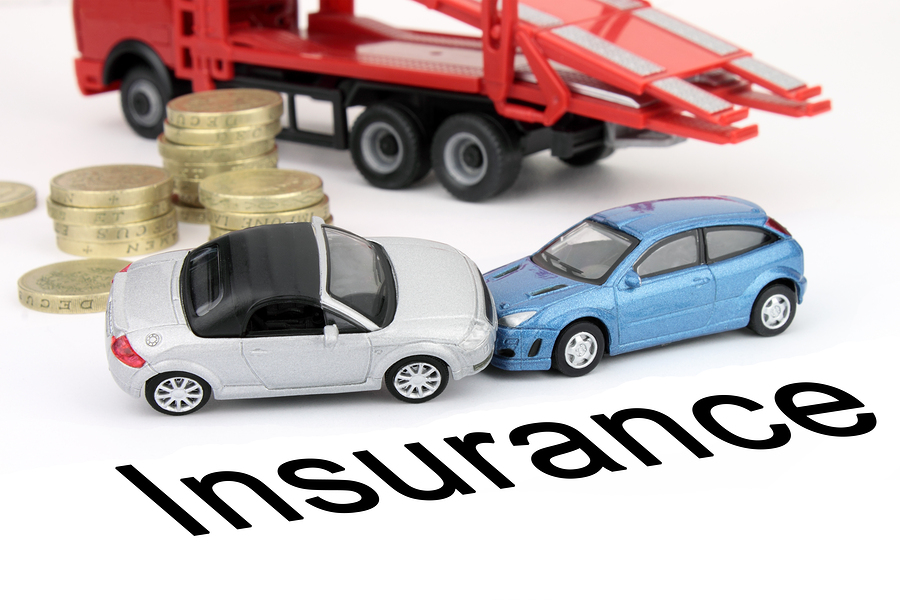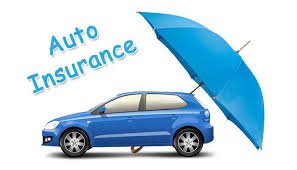Owning a vehicle brings convenience, independence, and mobility, but it also comes with responsibilities and potential risks. One of the most important aspects of vehicle ownership is auto insurance, a financial safety net designed to protect drivers, passengers, and their vehicles in case of accidents, theft, or other unexpected events.
Auto insurance is essential not only for compliance with legal requirements but also for financial security and peace of mind. Understanding its types, features, benefits, and how to choose the right policy can help drivers make informed decisions, save money, and ensure comprehensive protection.
1. What Is Auto Insurance?
Auto insurance is a contract between a vehicle owner and an insurance company, in which the insurer agrees to provide financial protection against losses in exchange for a premium. Depending on the policy, auto insurance can cover:
-
Vehicle damage due to accidents, fire, or natural disasters.
-
Third-party liability, including damages to other vehicles, property, or injuries to others.
-
Medical expenses for injuries to the driver or passengers.
-
Theft, vandalism, or other unforeseen events affecting the vehicle.
By paying a regular premium, policyholders transfer the financial risk associated with vehicle ownership to the insurance provider, reducing the burden of unexpected expenses.
2. Types of Auto Insurance Policies
Auto insurance policies vary in coverage and cost, allowing drivers to select a plan that suits their needs. The most common types include:
a. Liability Insurance
Liability insurance is mandatory in most countries. It covers damages or injuries caused to other people, vehicles, or property when the insured driver is at fault.
-
Does not cover the insured driver’s own vehicle.
-
Protects against legal claims and financial liability.
-
Generally the most affordable form of auto insurance.
b. Comprehensive Insurance
Comprehensive insurance provides extensive protection for both third-party liabilities and the insured vehicle.
-
Covers accidents, fire, theft, natural disasters, and vandalism.
-
Often includes add-ons such as roadside assistance and personal accident cover.
-
Premiums are higher but offer broader coverage.
c. Collision Insurance
Collision insurance specifically covers damage to the insured vehicle resulting from collisions with other vehicles or objects, regardless of fault.
-
Ideal for newer or high-value vehicles.
-
Often paired with comprehensive coverage for full protection.
d. Personal Injury Protection (PIP)
PIP or medical coverage provides compensation for injuries to the driver and passengers. Some policies also cover medical expenses for pedestrians in certain incidents.
e. Uninsured/Underinsured Motorist Coverage
This coverage protects policyholders if they are involved in an accident with a driver who does not have insurance or has insufficient coverage.
-
Ensures medical expenses and damages are still compensated.
-
Provides peace of mind on roads with high uninsured driver rates.
f. Pay-As-You-Drive (Usage-Based) Insurance
Modern insurers offer mileage-based or telematics insurance, where premiums depend on driving behavior and distance traveled.
-
Encourages safe driving habits.
-
Can reduce premiums for low-mileage drivers.
3. Key Features of Auto Insurance
Understanding the essential features of auto insurance helps policyholders choose the most appropriate coverage.
a. Coverage Limits
Coverage limits specify the maximum amount an insurer will pay for a claim. Higher limits provide better protection but may increase premiums.
b. Deductibles
A deductible is the portion of a claim the policyholder must pay out-of-pocket. Higher deductibles lower premiums but increase the amount paid during a claim.
c. No Claim Bonus (NCB)
No Claim Bonus rewards drivers who do not file claims during the policy period, often resulting in significant discounts during renewal.
d. Add-On Covers
Optional add-ons enhance protection, such as:
-
Roadside assistance
-
Engine and gearbox protection
-
Consumables coverage
-
Key replacement
Customizing a policy with add-ons ensures coverage aligns with individual needs.
4. Factors Affecting Auto Insurance Premiums
Several factors determine the cost of auto insurance premiums:
a. Vehicle Type and Model
Luxury and high-performance cars typically have higher premiums due to costly repairs and replacement parts.
b. Age of Vehicle
Older vehicles often have lower premiums for liability coverage but may be more expensive for comprehensive insurance due to repair challenges.
c. Driving History
Drivers with clean records benefit from lower premiums, while those with accidents or traffic violations may face higher costs.
d. Location
Urban areas with dense traffic or higher accident rates usually result in higher premiums compared to rural areas.
e. Coverage Type and Add-Ons
Comprehensive coverage and additional features increase premiums but provide broader protection.
5. Benefits of Auto Insurance
Auto insurance offers numerous advantages beyond legal compliance:
a. Financial Protection
Insurance reduces the financial burden of accidents, theft, or damage, preventing large out-of-pocket expenses.
b. Legal Compliance
Most regions require a minimum level of auto insurance to drive legally, protecting both drivers and others on the road.
c. Peace of Mind
Knowing that accidents, theft, or natural disasters are covered allows drivers to travel confidently without worry.
d. Access to Cashless Repairs
Many insurers offer network garages where repairs are directly covered, reducing the hassle of upfront payments.
e. Additional Benefits
Depending on the policy, drivers may enjoy personal accident cover, replacement vehicles during repairs, and emergency assistance services.

6. Choosing the Right Auto Insurance Policy
Selecting the right auto insurance requires careful consideration:
a. Assess Your Needs
Determine whether basic liability insurance or comprehensive coverage is appropriate, considering vehicle age, value, and usage.
b. Compare Policies
Compare premiums, coverage limits, deductibles, and add-ons across insurers to identify the best value.
c. Check Insurer Reputation
Select a company with reliable claim settlement, customer service, and strong financial stability.
d. Understand Policy Terms
Read the fine print, including exclusions, deductibles, and claim procedures, to avoid surprises during emergencies.
e. Consider Long-Term Costs
Choose a policy that balances premiums and coverage, ensuring sustainable protection without overpaying.
7. Common Auto Insurance Exclusions
Insurance policies do not cover all scenarios. Common exclusions include:
-
Damage from intentional acts or illegal activities.
-
Accidents while driving under the influence of alcohol or drugs.
-
Using the car for commercial purposes on a personal policy.
-
Wear and tear or mechanical breakdowns.
-
Damage due to war, riots, or natural disasters (unless specified).
Understanding exclusions ensures the right coverage is selected for potential risks.
8. Filing an Auto Insurance Claim
Filing a claim involves the following steps:
a. Notify the Insurer
Report the accident or damage promptly to your insurance company.
b. Document the Incident
Provide photos, police reports (if required), and other necessary documentation.
c. Assessment
The insurer assesses the damage and estimates repair costs.
d. Claim Settlement
After approval, the insurer either reimburses repair costs or provides cashless service at an authorized garage.
Timely reporting and proper documentation streamline the claim process.
9. Tips to Lower Auto Insurance Premiums
Drivers can adopt strategies to reduce premiums without compromising coverage:
-
Maintain a clean driving record.
-
Choose higher deductibles to lower upfront premiums.
-
Combine multiple policies (home, auto, etc.) with one insurer for discounts.
-
Opt for usage-based insurance if the car is used infrequently.
-
Install anti-theft devices or GPS trackers.
These measures help policyholders save money while maintaining comprehensive protection.
10. The Future of Auto Insurance
Auto insurance is evolving with technology and mobility trends:
a. Telematics and Usage-Based Insurance
Telematics devices monitor driving behavior, rewarding safe drivers with lower premiums.
b. AI and Automation
Artificial intelligence streamlines claim processing, risk assessment, and fraud detection, improving efficiency and customer experience.
c. Connected Cars
Smart cars with sensors provide real-time data, enabling personalized insurance policies based on actual usage and driving patterns.
d. Eco-Friendly Policies
Hybrid and electric vehicles are increasingly eligible for green insurance discounts, promoting environmentally responsible driving.
11. Why Auto Insurance Is Essential
Auto insurance is a vital part of responsible vehicle ownership. Without it, drivers may face costly repair bills, medical expenses, or legal liabilities.
Comprehensive coverage ensures that drivers can handle accidents, theft, or natural calamities without significant financial strain. Insurance also encourages safer driving habits and protects the well-being of passengers and pedestrians.
12. Common Misconceptions About Auto Insurance
Despite its importance, misconceptions persist:
-
“Third-party insurance is enough for all vehicles.”
Liability insurance does not cover the driver’s own vehicle. -
“Insurance is too expensive for old cars.”
Affordable options exist, and comprehensive coverage is beneficial for vehicles of any age. -
“Claims always increase premiums.”
Minor claims may not affect renewal rates, especially under a No Claim Bonus policy. -
“Auto insurance only covers accidents.”
Comprehensive policies cover theft, fire, natural disasters, and medical expenses.
Clarifying these myths helps drivers make informed decisions.
13. Auto Insurance and Financial Planning
Auto insurance is a critical element of financial planning. Vehicle-related expenses are unpredictable, and insurance protects savings from unexpected costs.
Including insurance in financial planning ensures coverage for major repairs, medical expenses, and legal liabilities, preventing financial setbacks and promoting long-term stability.
14. Renewal of Auto Insurance
Auto insurance policies are typically valid for one year. Renewal involves:
-
Comparing updated premiums and policy features.
-
Applying No Claim Bonus discounts.
-
Updating vehicle and personal information.
-
Paying the premium before policy expiry to maintain uninterrupted coverage.
Timely renewal prevents lapses, ensuring continuous protection and compliance with the law.
15. Conclusion
Auto insurance is an indispensable part of responsible vehicle ownership, offering protection, legal compliance, and peace of mind. From liability coverage to comprehensive policies with add-ons, insurance options cater to diverse needs and budgets.
By understanding coverage types, key features, premium factors, and claim procedures, drivers can make informed choices and secure adequate protection. The future of auto insurance is being shaped by **telematics,


